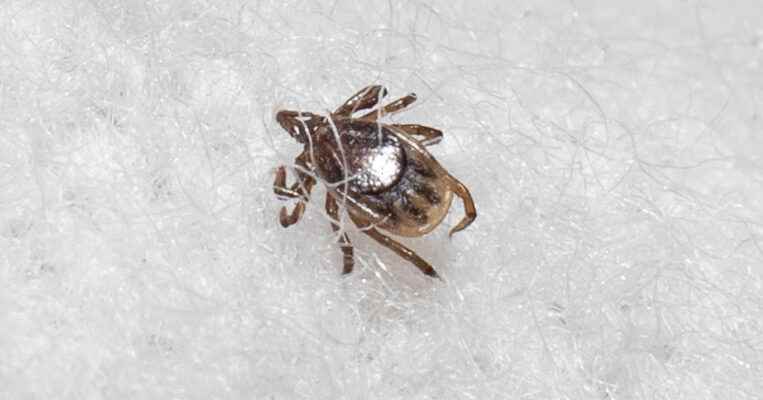(Halifax) Researchers say the prevalence of Lyme disease-carrying ticks is expected to be higher than ever in most of Canada this year.
Posted at 6:15 a.m.
Vett Lloyd, researcher and director of the Lloyd Tick Lab at Mount Allison University in New Brunswick, says that because of advancing climate change, each tick season will likely be worse than the last.
“As winters get milder and shorter, ticks survive better and they have more time to feed and reproduce,” Lloyd said in a recent interview. “Once a female tick finds a male and food, she can produce around 3,000 eggs. The population then explodes very quickly.
Nova Scotia has the highest ratio of ticks per capita in Canada and ranks second to Ontario in the total number of ticks reported. But insects can be found all over Canada.
Vett Lloyd reports that the ticks are active from late April until June, then they generally rest during the warmer months. Their presence then peaks from the end of September until November.
The tiny insect is of concern because it spreads Lyme disease, which is harmful to humans and pets. Not all ticks carry the Lyme disease bacteria, but blacklegged deer ticks are the most susceptible to infection, according to the researcher.
Cases of the tick-borne disease have increased by 150% in Canada between 2020 and 2021, with nearly 2,900 cases reported to federal authorities last year. The count does not include cases that were not detected or reported.
The most common sign of Lyme disease is an expanding rash that usually begins at the site of the tick bite. Other early symptoms include fever, chills, fatigue, and headache.
If left untreated, the infection can spread to the joints, heart, and nervous system.
Justin Wood, who runs the Ontario tick testing organization Geneticks, has also observed that tick activity continues to increase. “I think everyone will say they see more ticks every year,” he said in an interview. The Geneticks lab has received over 400 ticks for testing over the past six weeks. About 1600 ticks were sent to the lab throughout the 2021 tick season.
Ticks can reproduce locally and new tick populations are introduced on migrating animals, usually by landing on birds, according to Vett Lloyd. Ticks also travel and spread locally on mammals such as deer or mice.
The Canadian Veterinary Medical Association states on its website that ticks are expanding their range in parts of Canada at a rate of approximately 46 kilometers per year.
In Ontario, a 2019 study from the University of Ottawa found that one-third of blacklegged ticks in the Ottawa area carried Lyme disease.
Manisha Kulkarni, an associate professor at the University of Ottawa who studies ticks and tick-borne diseases, reports that over the past five to 10 years, researchers have noticed “a great northward expansion” of ticks. black-legged in the Ottawa area.
“Ticks are being detected in more and more places around the city of Ottawa and closer to areas where people live, so there’s also a higher chance of people coming into contact with them.” she.
The City of Ottawa reported 180 cases of Lyme disease in 2019, 120 in 2020 and 290 last year.
The northward expansion of ticks is also observed in Quebec. Virginie Millien, an associate professor of biology at McGill University, says the movement of ticks means they can now be found in southern suburban areas of the province where they didn’t even live five years ago.
About 10 years ago, there were a few places in Quebec where researchers found established tick populations, she says; they were all on the south side of the St. Lawrence River.
“Now that they have crossed the river, and because it is warmer and there is more humidity, the conditions are perfect for the ticks,” according to Mme Millien. “In southern Quebec, they are now everywhere, including in my garden.”
In Nova Scotia, ticks can be anywhere, but they are most prevalent in southern areas and the Annapolis Valley. They are also commonly found in and around Halifax. Researchers who collect and sample blacklegged ticks have found that in Nova Scotia, 30% to 50% of them carry Lyme disease.
In order to keep Lyme disease manageable for Canadians who might be infected, Vett Lloyd wants an increase in testing for the disease offered in the healthcare system. Early detection and treatment can significantly help reduce the harmful effects of the disease.
Health officials are also advising people to be diligent when spending time outdoors, which means wearing long pants tucked into socks, using insect repellent and checking carefully for ticks near the House.
